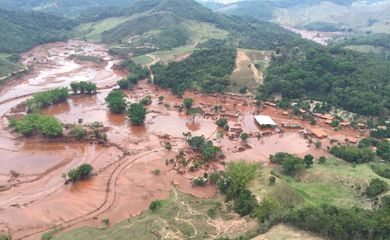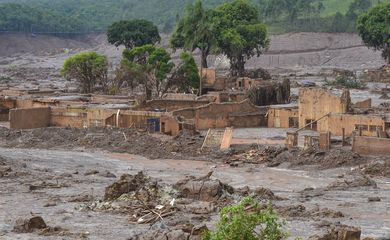Tragedy in Mariana: Companies’ missteps listed before UK court

On the first day of the British court trial that will determine whether the Anglo-Australian mining company BHP Billiton is responsible for the 2015 tragedy of the Fundão dam collapse in Mariana, Minas Gerais state, the law firm Pogust Goodhead (PG), which represents around 620 thousand claimants, presented errors that were allegedly made by the mining companies leading to the collapse.

The tragedy caused the death of 19 people. The collapse released 40 million cubic meters of toxic waste and mud into the Doce river. The disaster also had long-lasting, catastrophic effects on communities and businesses in the states of Minas Gerais and Espírito Santo.
In the trial, expected to last until March 5, 2025, the hearings began with opening statements from the lawyers for both sides, a phase that is expected to go on for four days. PG made its presentation Monday.
A report released to the press by the firm’s representatives says Justice O’Farrell heard that the Mariana dam was owned by Samarco—a joint venture between Anglo-Australian BHP and Brazilian Vale. This was followed by arguments holding the partners responsible.
Samarco’s board of directors, the firm said, was full of BHP and Vale representatives and had no independent members on its executive board. Representing the plaintiffs, Alain Choo Choy KC said that decisions at Samarco could only be taken with the joint agreement of the shareholder representatives of BHP and Vale.
“BHP’s direct participation and involvement in guiding, controlling, and influencing Samarco, that is, in the executive board and in all significant aspects of Samarco’s operations, are equally relevant and impactful,” said Choo Choy.
The court also heard, according to the report released, that BHP knew, at least three years before the dam burst, in 2015, that Vale had been dumping 1.3 million tons of mining tailings into the dam every year since 2009—despite a contract between Vale and Samarco stipulating that no more than 109,324 tons of tailings were to be dumped each year.
The office also stated that a document from one of these meetings, in April 2012, mentioned the high levels of tailings dumped by Vale. But BHP reportedly advised its representatives not to “force” the suspension of the contract with Vale.
Choo Choy said: “BHP’s decision, which was carried out, was for Vale to continue dumping its waste until the dam collapsed. Millions of tons of tailings from the Alegria mine were dumped behind the dam. BHP approved this arrangement, even though it was unsafe and uneconomical for Samarco.”
BHP, the firm stated, has approved plans to increase the height of the dam—first to 920m, then to 940m—to accommodate the growing volume of tailings being dumped.
“By August 2014 at the latest, and probably earlier, a reasonable person in BHP’s position would not have approved the continued raising of the dam,” said Choo Choy. “The simple fact is that it was not safe to continue raising the dam […], because it was in a very fragile state and showed signs of severe stress,” he added.
BHP refutes allegations
In a statement, BHP says it refutes the allegations about its level of control over Samarco, and says it has always been a company with independent operation and management, adding that they continue to work closely with Samarco and Vale to support the ongoing process of reparation and compensation underway in Brazil.
According to BHP, the Renova Foundation—created in 2016 as part of the first agreement with the Brazilian public authorities—has allocated over BRL 38 billion in emergency financial aid, compensation, environmental repair, and infrastructure to approximately 430 thousand people, local businesses, and indigenous and quilombola communities.




